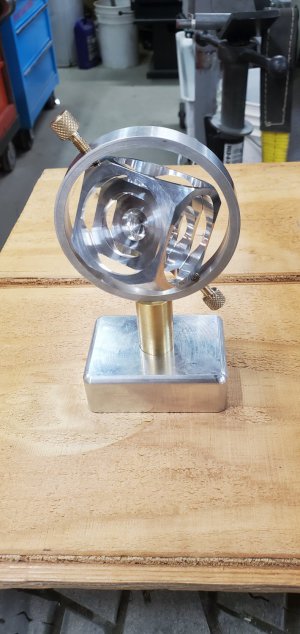- Joined
- Sep 18, 2023
- Messages
- 28
I’ve heard it said that your first machine purchase should be a lather and not a mill*, and that with enough work/steps, you can more or less make most things that you could make on a mill.
I can visualize some basic operations that are equivalent of milling. For example, and I’m not speaking from experience, so forgive me if I’m wrong, I think you could true the face(s) of a block of steel with a face plate by center mounting the steel and facing like you would the end of a cylinder. I’ve seen examples of people turning this sphere/plus-shaped cube thing.
I am interested in other, perhaps surprising, operations you can do with a lathe. I can’t imagine cutting a keyway with one, at least without a milling attachment, which I assume is kind of cheating by this definition.
*I think the first place I heard this was Quinn aka Blondihacks in her mill skill series where she says, if you’re new to machining, watch her lathe skills series first, as she recommends people start with a lathe. I’ve seen her mentioned before, a on the off chance that someone new to machining sees this and doesn’t know of her: She’s great. The $5/month I pay to be a Patreon supporter is money better spent vs. a streaming service.
I can visualize some basic operations that are equivalent of milling. For example, and I’m not speaking from experience, so forgive me if I’m wrong, I think you could true the face(s) of a block of steel with a face plate by center mounting the steel and facing like you would the end of a cylinder. I’ve seen examples of people turning this sphere/plus-shaped cube thing.
I am interested in other, perhaps surprising, operations you can do with a lathe. I can’t imagine cutting a keyway with one, at least without a milling attachment, which I assume is kind of cheating by this definition.
*I think the first place I heard this was Quinn aka Blondihacks in her mill skill series where she says, if you’re new to machining, watch her lathe skills series first, as she recommends people start with a lathe. I’ve seen her mentioned before, a on the off chance that someone new to machining sees this and doesn’t know of her: She’s great. The $5/month I pay to be a Patreon supporter is money better spent vs. a streaming service.



